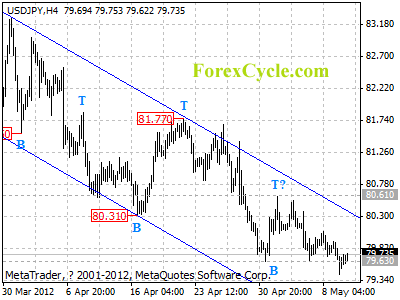Article by Investment U

Below I’ll show you a more affordable way to play Apple’s expected growth, but first let me show you why I’m so confident in the stock…
Apple (Nasdaq: AAPL) let us know last Tuesday that once again the company knocked it out the park.
It had an unbelievable second quarter in 2012, largely due to strong iPhone sales – again.
Analysts last month tried to read between the lines on earnings reports from Verizon (NYSE: VZ) and AT&T (NYSE: T), and figured there would be lower iPhones unit sales. The stock got pretty beat up for week. However, Apple showed that iPhone distribution isn’t a two-trick pony.
I’m certainly bullish on Apple, but I also don’t want to tie up all the money it takes to acquire shares in the $600-range. Below I’ll show you a more affordable way to play Apple’s expected growth, but first let me show you why I’m so confident in the stock…
$1,000 By 2014?
Let’s start with earnings. Expectations were $10.07 per share, and Apple went above and beyond with $12.30 in earnings on $39.2 billion in revenue. And if you haven’t heard, the second quarter is usually Apple’s worst. Yet, Apple delivered its second-best quarter in history – with last quarter being the best.
Apple’s first quarter this year raised the bar on results both in terms of revenue levels and gross margin. According to Forbes’ Darcy Travlos, this year’s first quarter was the highest gross margin quarter at 44.7%, only to be bested this quarter by a gross margin of 47.4%.
She goes on to say, “Apple can continue to deliver these beats on expectations by putting a major emphasis on its supply chain and, for the last couple of product releases, by keeping its form factors consistent so that it can continue to improve manufacturing efficiencies.”
In early April, some analysts projected the stock could surge to $1,000 by 2014.
Think about it. Who doesn’t want a stock forecasted to get to a $1,000 a share that right now is trading in the $590 range?
In fact, there are a lot of “sexy” equities in the market like Apple, MasterCard (NYSE: MA), Priceline (Nasdaq: PCLN) and Google (Nasdaq: GOOG) that are priced in the hundreds. You want to get in on the growth, but the average investor is priced out, regardless of attractive fundamentals.
The Bull Call Spread
Options strategies can allow you to get in the game without leveraging the farm. Sometimes the mere mention of options trading can put the fear of God into the average investor – and to be fair, there is a ton of risk if you don’t know what you’re doing.
But I think this specific strategy, and an example, can show how this can be done fairly easily. It’s called a “bull call spread.”
The bull call spread, or vertical call spread, is when you buy call options at a specific strike price while also selling the same number of calls of the same asset and expiration date at a higher strike.
As the name implies, a bull call spread is used when you believe a security is going up. The most you can gain is the difference between the strike prices of the long and short options, less the net cost of options.
In the March 26 issue of Barron’s, Striking Price columnist Steven M. Sears gives a pretty good example of how this works:
With Apple at $601.31, investors can buy Apple’s January $600 call that expires in 2013, and sell Apple’s January $700 call that also expires in 2013. The position costs $37.50, and lets investors benefit if Apple’s stock hits $700 by next January.
If Apple’s stock advances as expected, investors who used the Apple call-spread strategy buying the January $600 call and selling the January $700 call-will make a 168% return on their investment.
Of course you get limited return if the stock goes above $700 because you don’t own it.
But keep in mind that one of the great things about this spread trade is that the expense you incur by purchasing the at-the-money call option is offset by the income you receive from writing the out-of-the-money call option – and this why your net expense for the trade is much smaller.
Good Investing,
Jason Jenkins
Article by Investment U


